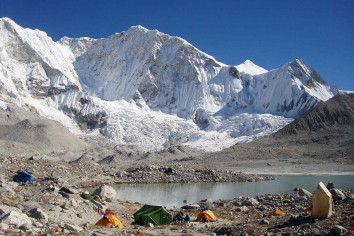Tilicho Peak Expedition - Trip highlights
- Ideal 7,000 metres peak for intermediate climbers who seek adventure in climbing and learning new techniques.
- Beautifully ornate by the inspiring landscape of Tilicho Lake and Annapurna massifs.
- Rewarding summit with a awe-inspiring view of Annapurna II, III, IV, Lamjung Himal, Gangapurna, Nilgiri North, and Kgangsar Kang peak.
- Fewer climbers each year make it the perfect expedition for genuine travellers.
- Trekking on the serene trail of Annapurna Circuit till Pisang and crossing Mesokanto Pass at 5,315 metres and Thorong La pass at 5,416 metres.
- Well-structured Tilicho Peak expedition with efficient logistics and experienced climbing guides.
- Perfectly designed 13-15 days climbing period at Tilicho Peak Base Camp with adequate acclimatisation.
- Witnessing the lifestyle and culture of Thakali and the Tibetan people of Manang.
Tilicho Peak Expedition - Trip Overview
Imagine a base camp of a peak at 5,800 metres, sitting over the turquoise water of the world's highest, Tilicho Lake at 4,919 metres, surrounded by mighty mountains. Yes, it exists as Tilicho Peak in Manang, which rises to 7,134 metres. Positioning between Nilgiri Himal North at 7,061 metres and Khangsar Kang at 7,558 metres, Tilicho Peak must be on every intermediate climber's climbing list.
Gifted with climbing peaks like Tilicho Peak, Gangapurna, and Annapurna, the mountains in Manang are undoubtedly a hub for intermediate mountaineers. The perfect setting of landscape, less crowd, fewer exposed ridges, and straightforward climbs of Tilicho Peak attract genuine climbers.
During the 1950s, many European expedition teams showed interest in climbing Annapurna I. Amid such an alpine enthusiast, Maurice Herzog visited the Tilicho area to discover the possible route to the Annapurna I summit. When viewed from Tilicho Lake, a humongous wall of ice and rock impressed them hugely. Ultimately, they termed it "la grande barrier", which means the great barrier of ice that extends to 11 kilometres in length. High above Tilicho Lake, Tilicho Peak stands tall at the end of the La Grande Barrier. But, Emanuel Schmutz became the first person to scale Tilicho Peak from the Northwest shoulder. This shoulder remains the preferred route to climb the Tilicho Peak summit.
The arduous climb of the Tilicho Peak summit is rewarding. From Tilicho Peak summit, Annapurna II at 7,939 metres, Annapurna III at 7,555 metres, Annapurna IV at 7,525 metres, Gangapurna at 7,454 metres, and Lamjung Himal at 6,932 metres stand astounding. Other mountains include Nilgiri at 7,061 metres and Khangsar Kang at 7,558 metres adjacent to Tilicho Peak. Other than mountains, the Tilicho Peak expedition is on the Annapurna circuit that involves crossing Thorong La Pass. You'll get an option to cross Mesokanto Pass at 5,300 metres if you fly to Jomsom and trek via Kali Gandaki Gorge.
Tilicho Peak Expedition - Trip Itinerary
Northeast of Tilicho Lake, the base camp of Tilicho Peak sits at 4,800 metres. Surrounded by beautiful mountains and serene landscape, the Tilicho Peak base camp setting is heavenly. Hence, it will be an ideal place for acclimatisation and climbing preparations for us.
We'll start the Tilicho Peak expedition by driving to Besisahar from Kathmandu for 7 hours. There's also an option for you to fly to Jomsom and hike to Mesokanto Pass. You'll reach Tilicho Peak base camp in three days from this route. But, there'll be insufficient time for acclimatisation. Hence, we'll follow the hike from Besisahar to Dharapani, Chame, Pisang, Manang, Khangsar, Tilicho Lake and Mesokanto Pass. We'll be acclimatising at Manang before heading to Khangsar.
We'll have 13-15 days for climbing preparations at Tilicho Peak base camp. Our Sherpa guides will assist you with acclimatisation and rotation climb to High Camps. On a stable weather day, we'll climb the Tilicho Peak summit.
Tilicho Peak Expedition - Climbing Route
The climb to Tilicho Camp I at 5,795 metres from base camp is straightforward. The Northwest shoulder climb from base camp includes crossing 1.5 km of snow-filled terrain and a 50-degree steep ice ridge. The 700 metres tall icy ridge climb is arduous, but sightseeing from here is rewarding. View of Tilicho Lake and Annapurna massif from Tilicho Camp I is inspiring.
We'll acclimatise at Tilicho Peak Camp I and practice routine climbing and training. After crossing a 55-degree steep snowfield, we'll hike further to Camp II at 6,200 metres. Climbing Camp II involves the most use of fixed-line. The climb becomes safe as the shoulder we climb is broad. We'll stay at Camp II overnight and climb the summit the next day if the weather becomes stable. If the weather becomes terrible for the climb, we'll descend to Tilicho Peak base camp for extra preparations and wait until another ideal weather.
The little exposed ridges and wide shoulder climb make the summit climb easier. To lower the risks of avalanches, we'll follow a steep climb to the summit. After a successful Tilicho Peak summit, we'll return to Tilicho Peak base camp. From here, we'll trek to Jomsom crossing Thorong La pass.
Tilicho Peak Expedition - Climbing Difficulty
Tilicho Peak climbing is a D+ grade difficulty. The overall climbing days at Tilicho Peak are around 14 days. Hence, you'll need alpine skills, physical fitness, and mental strength.
The arduous climbs to Tilicho Peak Camp II on the North shoulder are challenging. 50 to 60-degree steep climb to the summit via snow-occupied icy ridges requires the navigation of fixed lines, use of jumars, and harness. The climbing ridges are less exposed but are steep climbs.
The long summit day of 16 hours is tiring. Hence, with climbing skills, physical endurance is also a must. The climbing period training will prepare you for the summit climb. Also, the hike on Thorong La and Mesokanto Pass requires proper fitness.
Hence, Tilicho Peak climbing is not for first-time climbers. Intermediate mountaineers who want to sharpen their climbing skills find Tilicho Peak climb ideal.
Why World Expedition Nepal for Tilicho Peak Expedition?
World Expedition Nepal focuses on and promotes peak climbing and expeditions in Nepal. We have been providing tour services since 2017 by registered and licensed under Nepal Government. In the Annapurna region, we'll make sure that you'll have complete joy alongside the adventure of high-altitude climbing.
Our professional and experienced guides will ensure your utmost comfort and safety on Tilicho Peak climbing. We'll make this tour an unforgettable experience for you. Also, the health and safety of our clients is our primary motto. Our guides for these expeditions have mountain skills certification. They come with expertise in mountain medicine, first aid, and rescue operations.
We have fixed departures for the Tilicho Peak expedition for Autumn 2022 and Spring 2023. Book your trip with us and experience the thrill of climbing this 6,000 metres peak.

 Recommended On
Recommended On
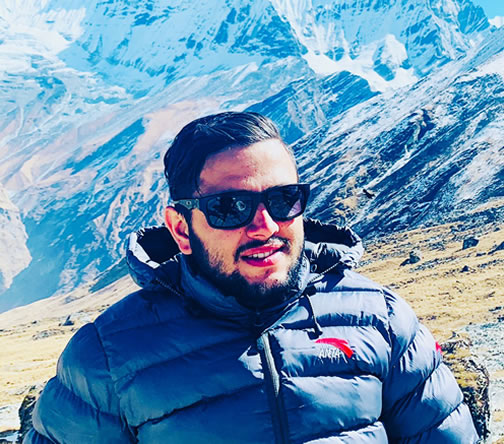




 7000m Peak Climbing , Nepal
7000m Peak Climbing , Nepal  26 Days
26 Days  US$9500
US$9500

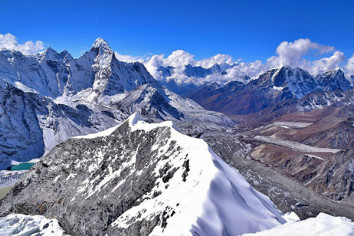
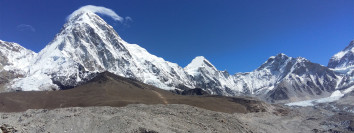


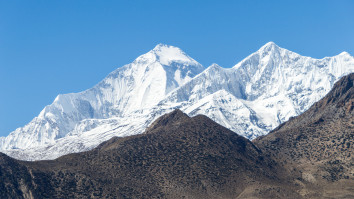
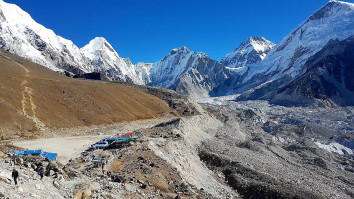
.jpg)
